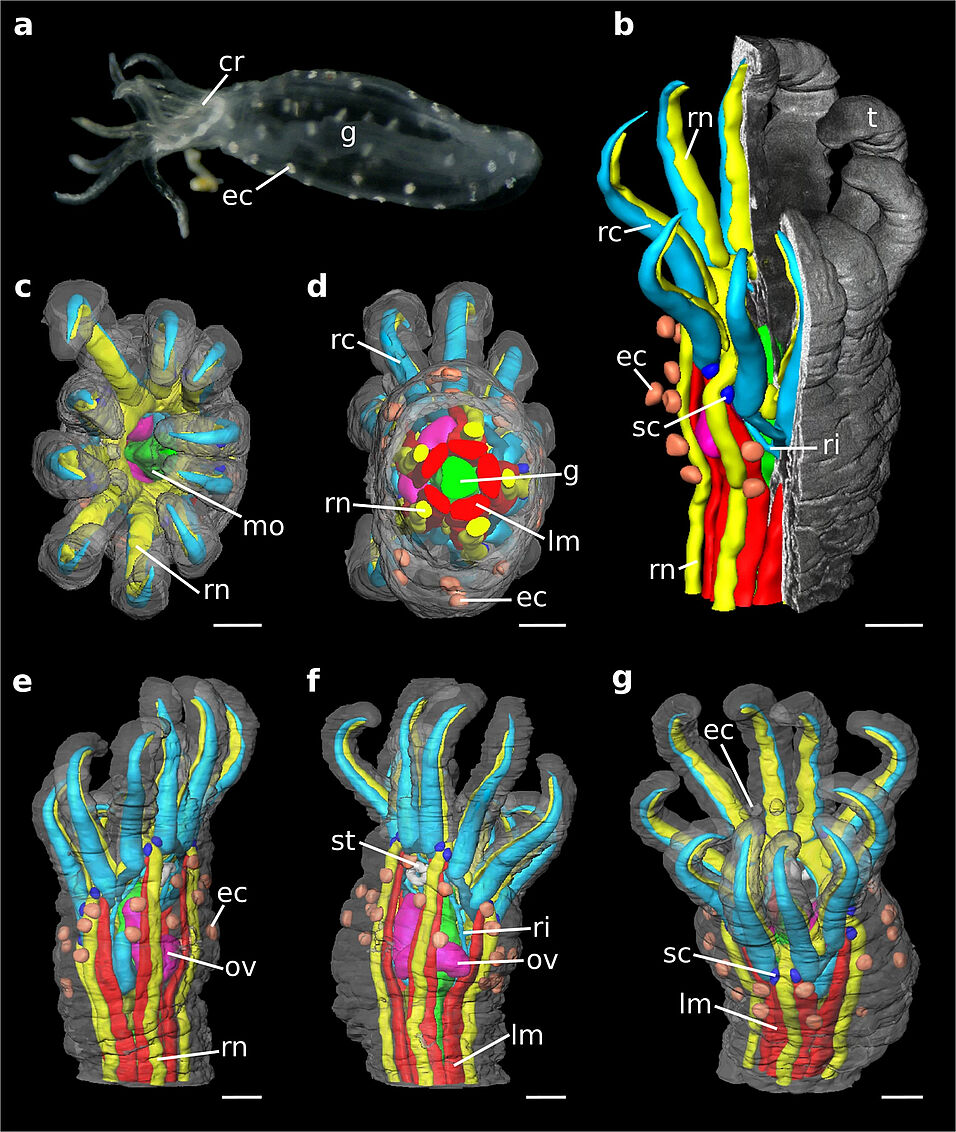Ferstl S, Schwaha T, Ruthensteiner B, Hehn L, Allner S, Müller M, Dierolf M, Achterhold K & Pfeiffer F.
Sci Rep 10, 3960 (2020). doi.org/10.1038/s41598-020-60977-5
Abstract
In the field of correlative microscopy, light and electron microscopy form a powerful combination for morphological analyses in zoology. Due to sample thickness limitations, these imaging techniques often require sectioning to investigate small animals and thereby suffer from various artefacts. A recently introduced nanoscopic X-ray computed tomography (NanoCT) setup has been used to image several biological objects, none that were, however, embedded into resin, which is prerequisite for a multitude of correlative applications. In this study, we assess the value of this NanoCT for correlative microscopy. For this purpose, we imaged a resin-embedded, meiofaunal sea cucumber with an approximate length of 1 mm, where microCT would yield only little information about the internal anatomy. The resulting NanoCT data exhibits isotropic 3D resolution, offers deeper insights into the 3D microstructure, and thereby allows for a complete morphological characterization. For comparative purposes, the specimen was sectioned subsequently to evaluate the NanoCT data versus serial sectioning light microscopy (ss-LM). To correct for mechanical instabilities and drift artefacts, we applied an alternative alignment procedure for CT reconstruction. We thereby achieve a level of detail on the subcellular scale comparable to ss-LM images in the sectioning plane.

